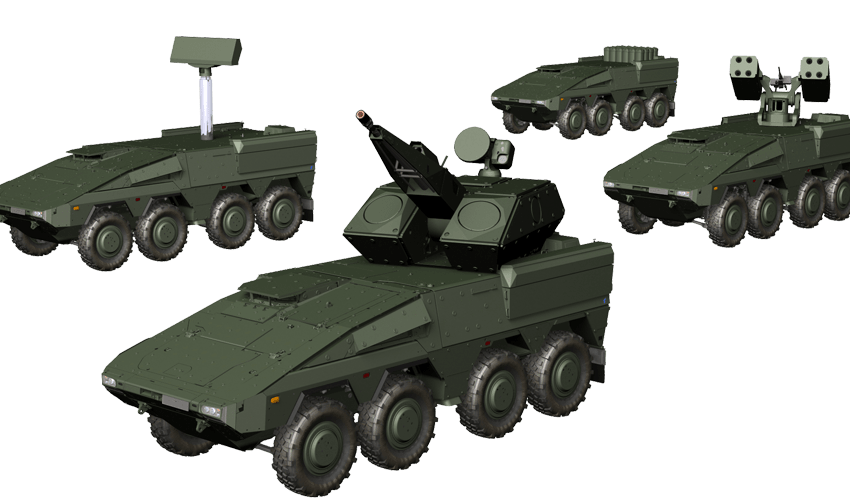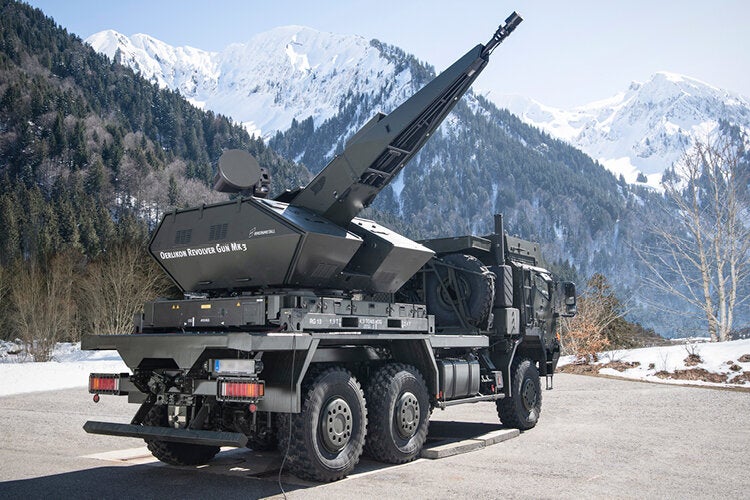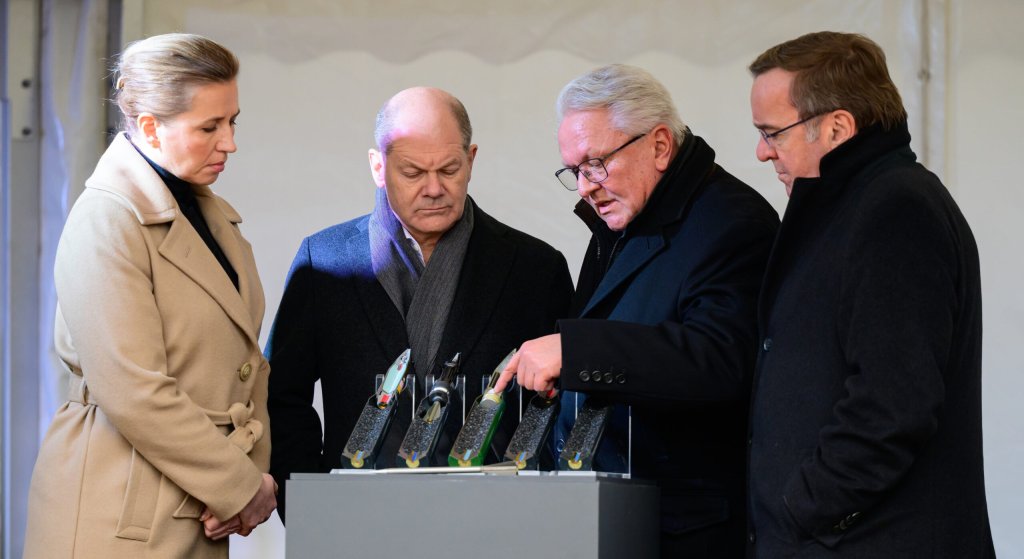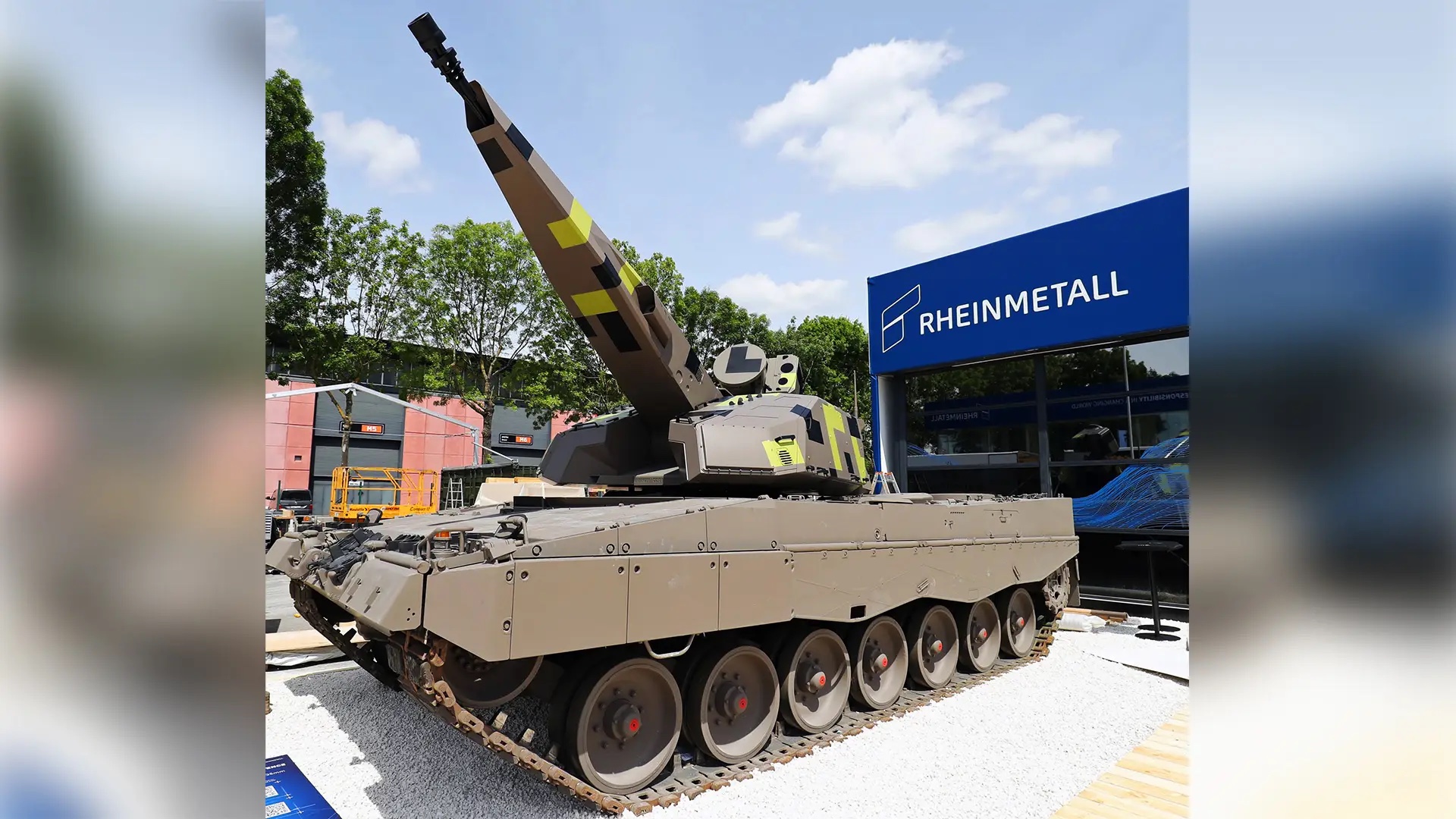The German Rheinmetall company is assessing whether Cold War-era Leopard 1 tanks can have their turrets swapped out to be fitted with the Skyranger 35 short-range air defense system, turning them into highly mobile counters to a range of aerial threats. The initiative is driven by Ukraine’s insatiable demand for ground-based air defenses, but the company is also pitching its more modern Leopard 2 with the same turret, indicative of a broader resurgence in interest in short-range air defense systems (SHORADS), especially as the drone threat continues to proliferate around the globe.
Plans to modify the Leopard 1 with the Skyranger 35 turret were announced by Björn Bernhard, Head of Land Systems at Rheinmetall. “There are still a lot of Leopard 1 battle tanks on whose chassis we could put the Skyranger turret with the 35mm cannon,” Bernhard told the German newspaper Bild.

While the Leopard 1/Skyranger 35 is aimed squarely at Ukrainian requirements, Bernhard noted that the modification effort is currently a secondary priority compared to Rheinmetall’s continued work to refurbish standard Leopard 1 tanks for Ukraine.
The SHORADS conversion of the Leopard 1 tank remains an experimental project at this stage, but it could be a compelling capability for Ukraine.
The latest Skyranger 35 is a development of the enduring 35mm revolver cannon developed by the Swiss Oerlikon company, one of the most widely used anti-aircraft guns. The modular design of the Skyranger 35 turret means it can be fitted with a range of different sensors to detect and engage aerial threats, with options including active electronically scanned array (AESA) radars, optronic packages, and passive radio frequency detection systems.

While capable of operating completely independently, the Skyranger 35 can be integrated with a wider air defense network via the Skymaster command and control architecture, including datalink and identification friend-or-foe (IFF) components.
The modular nature of the Skyranger 35 extends beyond the sensors, with options for other weapons, too. In addition to the baseline 35mm x 228 KDG revolver cannon, the same turret can accommodate a 30mm x 173 KCE gun, as the Skyranger 30.
In its latest application, these rapid-firing guns are provided with Oerlikon’s AHEAD air-burst ammunition, which releases a cloud of sub-projectiles just ahead of a target, increasing the probability of a kill and making it better suited to tackling low, slow, and small air threats like drones, rockets, and mortar projectiles. Air-burst rounds also significantly reduce the risk of collateral damage on the ground.

According to Rheinmetall, the 35mm caliber offers a counter-rocket, artillery, and mortar, or C-RAM capability out to an effective range of 2.5 miles. The 30mm caliber has an effective range of up to 1.8 miles. To extend its range further, and tackle other types of threats, the turret is designed to also mount short-range air defense missiles, typically a twin launcher for FIM-92 Stinger or Mistral missiles. Both those missiles are already used by Ukraine.
Looking further ahead, Rheinmetall says the turret can be integrated with vertically launched missiles for the counter-precision-guided munition (C-PGM) role, while integration of a high-energy laser is also being explored.
At the Eurosatory defense exhibition taking place outside Paris this week, Rheinmetall is displaying the Skyranger 35 integrated with the Leopard 2 tank (the successor to the Leopard 1), while the Skyranger 30 is presented integrated with the Boxer 8×8 armored fighting vehicle and the Lynx KF41 tracked armored fighting vehicle.

At this point, it’s worth noting that Germany has already provided Ukraine with two Rheinmetall Skynex systems that comprise 35mm anti-aircraft turrets firing AHEAD ammunition based on an HX 6×6 truck chassis and integrated with an X-TAR3D acquisition radar and Skymaster battle management system. Understood to have been delivered at the beginning of the year, the two Skynex systems have so far not been seen in Ukrainian service, but there have been suggestions that further examples may also be transferred.


The capabilities of the Leopard 1, meanwhile, are something that TWZ has explored in the past, also in the context of transfers of these vehicles to Ukraine. At the latest count, at least 135 Leopard 1s — all of which are Leopard 1A5 variants — have been secured by Germany for transfer to Ukraine. These come from former Danish, Dutch, and German stocks, while others were purchased by Rheinmetall from a Belgian private dealer.
Although transfers of Leopard 1s to Ukraine have been underway since at least July 2023, these tanks have not been widely seen in active service in the conflict.
As we pointed out in the past, the age of the Leopard 1s means they are likely being held back from the most critical offensives and there may well also be problems in securing ammunition for the tank’s 105mm rifled main gun.
These factors make the Leopard 1 an even more suitable candidate for conversion as SHORADS vehicles, whether based on the tanks already delivered to Ukraine or by securing additional examples.
While Björn Bernhard says “there are still a lot of Leopard 1 battle tanks” available, he didn’t state where these might come from. As we have noted in the past, the Leopard 1 remains in limited service around the world, with operators in its original role including Brazil, Chile, Greece, and Turkey. Meanwhile, specialist versions of the Leopard 1, including armored recovery, bridge-layer, and combat engineer models, are more widely used, including by Denmark, Estonia, Finland, Italy, the Netherlands, and the United Kingdom.

Rheinmetall’s proposed SHORADS solution is especially noteworthy given Ukraine’s positive experience operating the Gepard self-propelled anti-aircraft gun.
The Gepard is based on the hull of the Leopard 1 and also has a turret armed with 35mm guns, albeit in a twin mounting, with a gun on each side. Based on multiple Ukrainian reports, the Gepard has proven especially successful in countering Russian drones, and in some cases cruise missiles, which continue to lay siege to critical infrastructure and cities across the country.
Securing ammunition for the Gepards was also an issue since this is produced in Switzerland, which has a policy of neutrality regarding the war in Ukraine. To get around this, the German government pursued a deal with Rheinmetall to restart production of 35mm ammunition early last year.

Like the Gepard, the Leopard 1/Skyranger 35 would offer Ukrainian air defense operators a well-protected and highly mobile platform that could be used to provide point defense of critical installations and in support of units on the battlefield, including those that are on the move. Its modular nature means that it would be able to operate independently where required, but also ‘plug into’ existing air defense networks.

As for the Leopard 2/Skyranger 35 combination, this is likely directed at higher-end customers, perhaps including those poised to start withdrawing older examples of the tank from their normal combat roles, replacing them with new-generation vehicles, which could free up hulls for SHORADS conversions.
Offering the Skyranger 35 turret combined with the veteran Leopard 1 and the Leopard 2 reflects a broader growing interest in SHORADS, after many years of neglect by many armed forces, epitomized by the fact that the Gepard was essentially a dying breed in NATO before the war in Ukraine. These tanks provide a highly mobile air defense solution and are both immediately available, with the Leopard 2 also still in production.
Change is now being driven by the requirement for expanded counter-drone and counter-cruise missile capabilities, to address threats that TWZ has highlighted in the past and which Ukraine is now facing on a daily basis.
Earlier this year, the U.S. Army laid out plans to significantly expand its air and missile defense units, reflecting concerns about these and other aerial threats that have been growing for years now.
What’s perhaps most notable about these threats is how they extend all the way from the kinds of large-scale warfare that would be anticipated in a future conflict between China and the United States in the Pacific, all the way down to smaller national armed forces, and even to non-state actors.
Examples of how Germany’s Gepards have been used in Ukraine against low-flying aerial threats can be seen below.

Therefore, it’s not only the U.S. military that is being forced to play catch-up in developing ways of countering these threats, with the demand for bolstered SHORADS capabilities being felt around the world.
It’s no surprise that SHORADS solutions — including other turret-based systems like the Leopard 1/Skyranger 35 — are a prominent feature of the Eurosatory exhibition.
Key trends include porting these air-defense capabilities onto highly mobile armored vehicles that have their own sensors, and which have the capacity to combine gun and missile armament. Gun-based systems, however, like the Skyranger family offer a significant advantage over pure missile systems, with rounds of 35mm ammunition being far cheaper than a guided missile, each of which can cost hundreds of thousands of dollars and take years to procure. Obviously, this has particular resonance when facing a threat from massed drones.
Globally, it’s very clear that armed forces are facing a need for significantly more units to defend against aerial threats, especially drones and cruise missiles. For Ukraine, in particular, Rheinmetall’s hybrid between a modern air defense turret and a veteran tank could well be part of the answer to that challenge.
Contact the author: thomas@thewarzone.com
